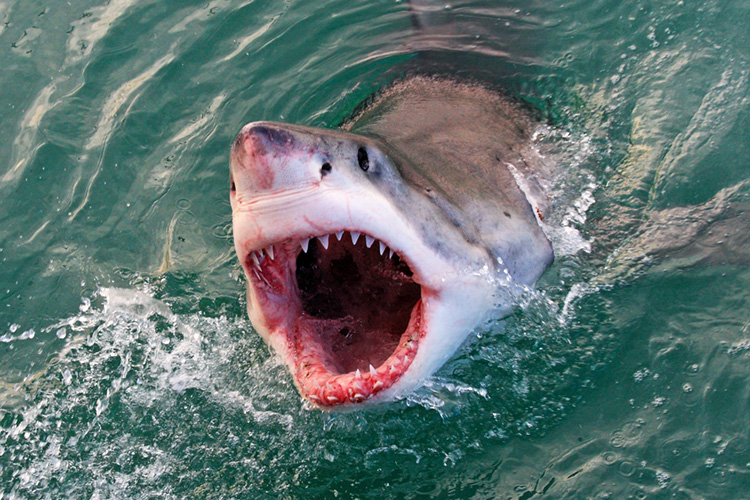Of all 375 shark species, only 12 are considered potentially dangerous to humans.
Sharks have a fearsome reputation for attacking humans in more or less warm and deep waters. Nevertheless, lightning strikes kill more people in the United States than sharks.
Sharks are Earth's most ancient animals. These apex predators with low reproductive rates feature skeletons made of cartilage. But they can be fast, violent, and ultimately deadly.
Sharks do not sleep - instead, they rest. They're cold-blooded souls with an uncontrollable curiosity toward a unique species: homo sapiens.
Sometimes, provoked and unprovoked shark attacks end in tragedy. But we must remember that the ocean is their home, and we must play by their rules.
Take a look at the most aggressive types of sharks for swimmers, surfers, divers, and fishermen:
1. The Great White Shark
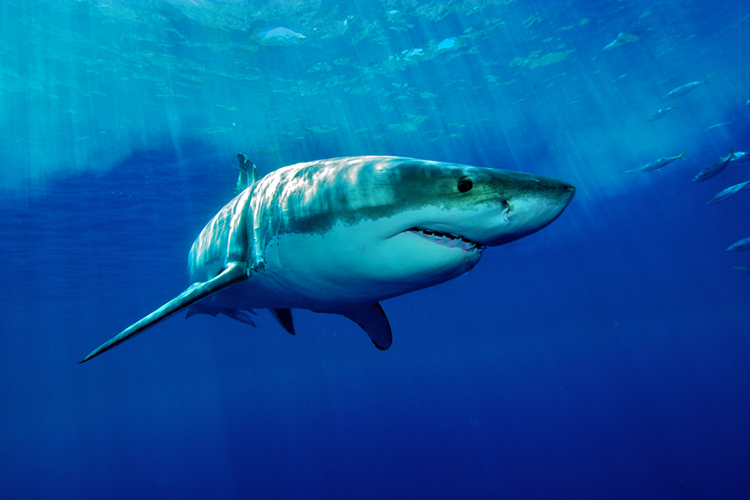
The great white shark, also known as the "white pointer," is the largest and deadliest predatory shark in the ocean.
Measuring between 11 and 21 feet (3.3-6.4 meters), it can propel itself at over 40 miles per hour (64 kilometers per hour).
With its 300 sharp teeth, the great white has the most powerful bite in the animal world - 18,000 Newtons (1,835 kilograms force).
The Carcharodon carcharias is responsible for between one-third and one-half of all yearly shark attacks;
2. The Tiger Shark
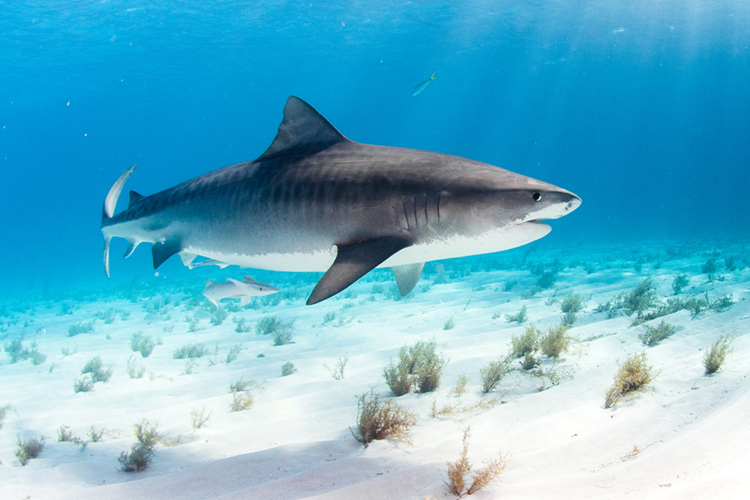
The tiger shark is a large oceanic predator measuring between 13 and 16 feet (3.9-4.8 meters).
With a broad food spectrum and extremely sharp teeth, this requiem shark features long fins and a unique camouflage technology called countershading.
The Galeocerdo lives in tropical and subtropical waters and is often culled to protect tourists.
3. The Bull Shark
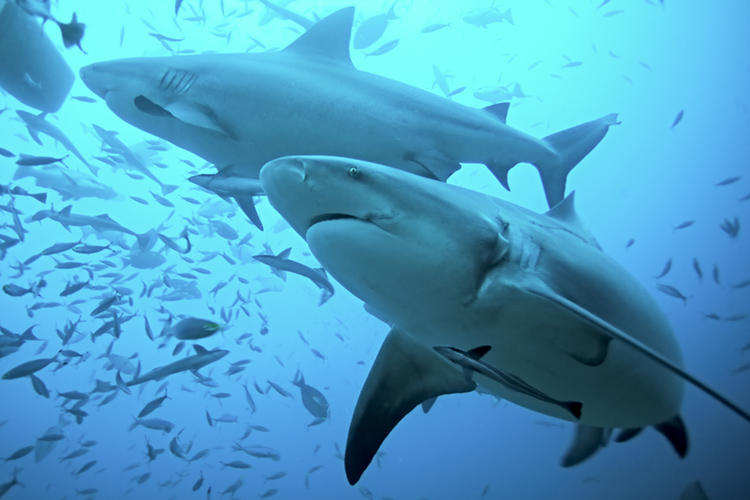
The bull shark, also known as "Zambezi shark" or "Lake Nicaragua shark," can be found in the shallow and warm waters of Central America, Australasia, India, and Africa's Atlantic coast.
It can survive long periods in fresh water and frequently travels far up rivers.
With unpredictable and territorial behavior, the Carcharhinus leucas measures between 7 and 11 feet (2.1-3.3 meters) in length.
The bull shark attacks on the Jersey Shore inspired the Hollywood movie "Jaws."
4. The Oceanic Whitetip Shark
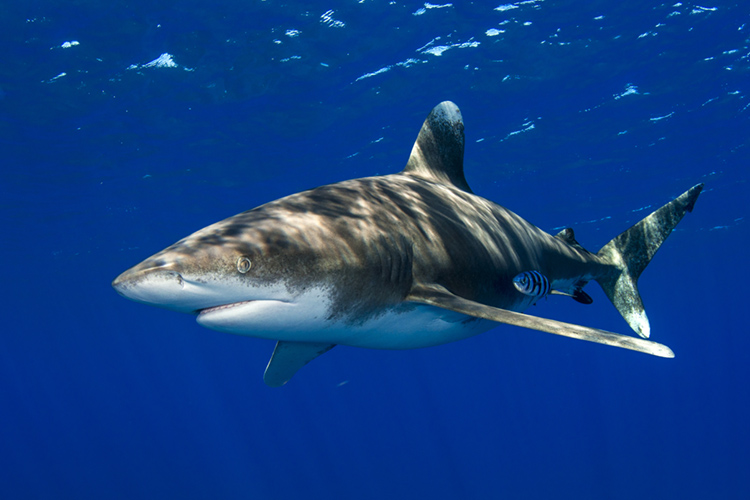
The oceanic whitetip shark, also known as "brown shark," is a slow-moving yet large and aggressive predator that inhabits tropical waters at medium depths (500-100 feet or 152-30 meters).
It has large wing-like pectoral and dorsal fins with white tips. The species is often hunted for its meat, fins, and oil.
French oceanographer Jacques Cousteau considered it "the most dangerous of all sharks."
5. The Blue Shark
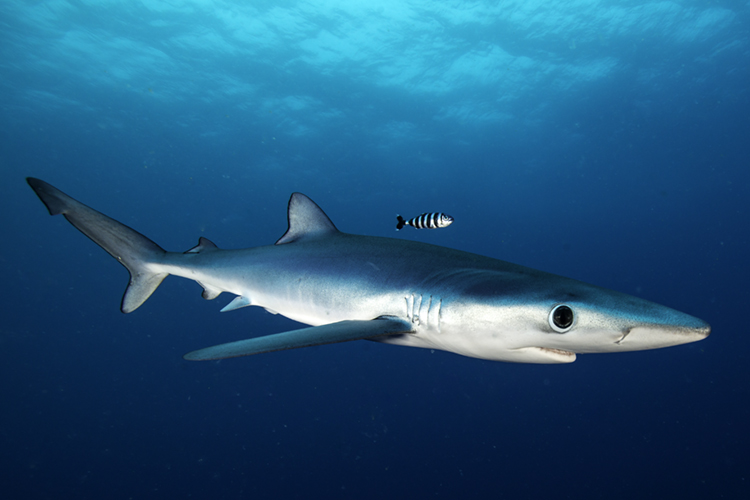
The blue shark is a long-distance traveler capable of roaming the North Atlantic on journeys of between 1,200 and 1,700 nautical miles (2,220 to 3,145 kilometers).
They prefer deep and cool waters and range in size from 6 to 10 feet (1.8-3 meters). The Prionace glauca can be found nearly everywhere except Antarctica.
6. The Shortfin Mako Shark
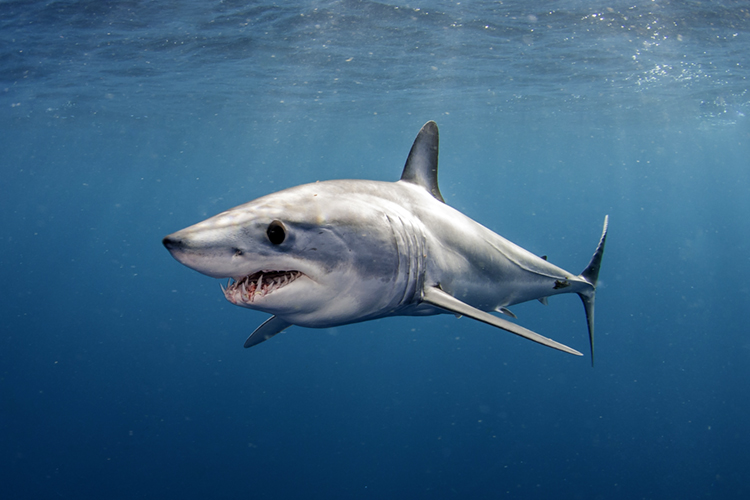
The shortfin mako, also known as "bonito shark" or "blue pointer," is one of the fastest sharks in the ocean, capable of swimming in bursts of 45 miles per hour.
With one of the largest brain-body ratios in the shark world, the Isurus oxyrinchus relies on vision, smell, and hearing to hunt its prey.
They can be found in temperate waters and have been classified as an endangered species.
7. The Sand Tiger Shark
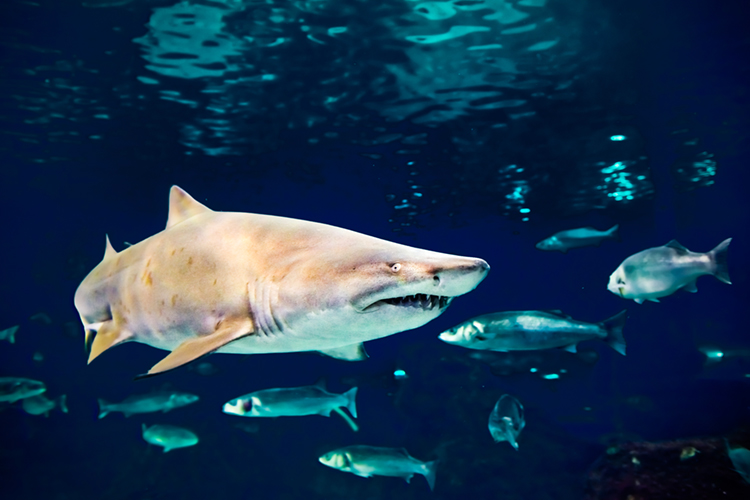
The sand tiger shark, also known as the "grey nurse shark," swims on subtropical and temperate coastlines and is a cousin of the great white.
With a pointy head, small eyes, and bulky body, this nocturnal feeder has a high tolerance for captivity.
8. The Blacktip Shark
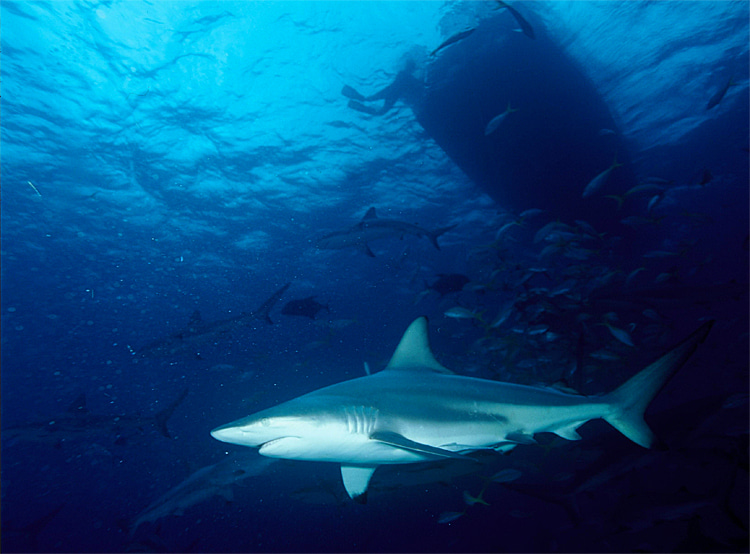
The blacktip shark has a robust and fusiform body featuring a pointed snout and long gill slits.
When attacking schools of small fish, the Carcharhinus limbatus usually makes spinning leaps out of the water.
It can be found in medium-to-shallow waters of tropical and subtropical coastlines. They're timid yet fast and may show curiosity toward humans.
9. The Hammerhead Shark
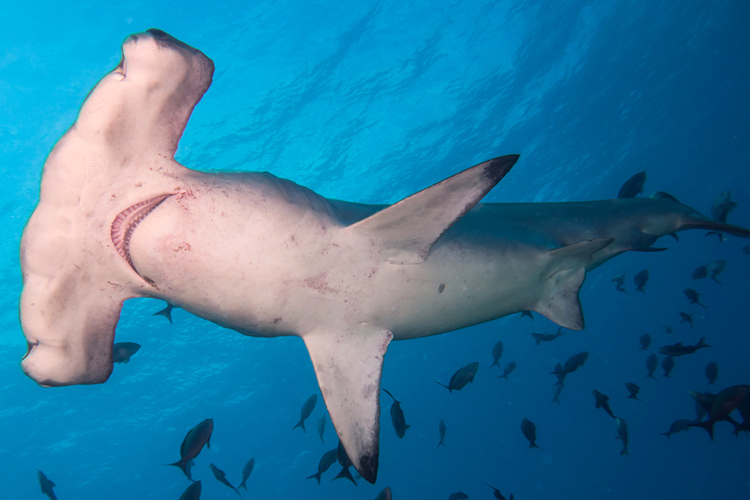
The hammerhead shark is a solitary hunter at night and swims in schools during the day.
It ranges from one to 20 feet (0.3-6 meters) in length and features a hammer-like head shape that may have evolved to enhance its vision.
For Hawaiian, the hammerhead is a respected shark and one of the gods of the sea. It can be found swimming near tropical and subtropical coastlines.
10. The Nurse Shark
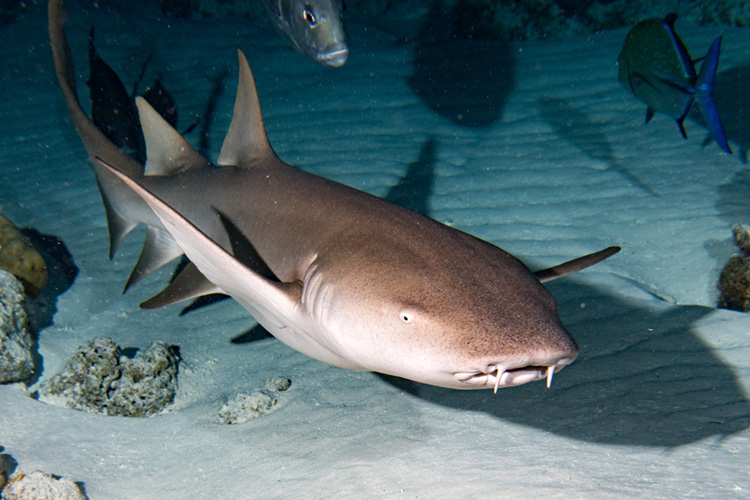
The nurse shark is a sedentary and solitary nocturnal predator that inhabits the Atlantic and Pacific Ocean coastlines.
They're not as inoffensive and docile as some might think and can reach 15 feet (4.5 meters) in length.
